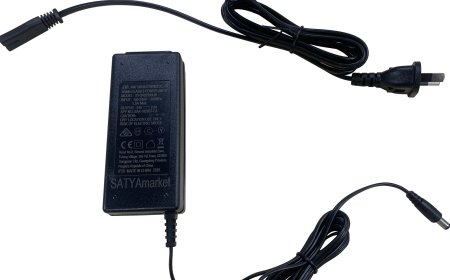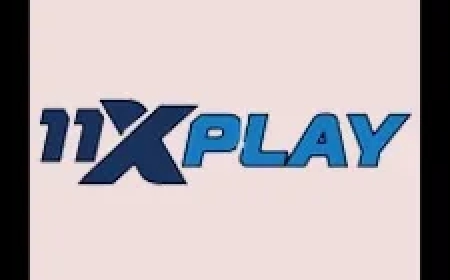RISC-V Technology Market Set to Hit USD 17.40 Billion by 2034, Fueled by Open-Source Innovation and Strategic Industry Alliances
RISC-V Technology Market Set to Hit USD 17.40 Billion by 2034, Fueled by Open-Source Innovation and Strategic Industry Alliances
TheglobalRISC-V technology marketis undergoing transformative growth, rising fromUSD 1.35 billion in 2024to a projectedUSD 17.40 billion by 2034. This exceptional expansion, at a compound annual growth rate(CAGR) of 29.2%, is driven by the increasing adoption ofopen-source hardware, the demand forcustom processor cores, and the rapid evolution of next-generation computing across sectors such as automotive, edge computing, and AI.
As companies and governments pursue alternatives to proprietary chip architectures,RISC-V (Reduced Instruction Set Computing Five)is quickly emerging as a viable, flexible, and cost-effective alternative to traditional instruction set architectures (ISAs) such as ARM and x86.
Market Overview
RISC-V is a royalty-free, open standardinstruction set architecturebuilt on reduced instruction set computing (RISC) principles. Its open-source nature fosters rapid development and customization, allowing semiconductor developers to design processors tailored to specific workloads without licensing constraints.
This architecture offers scalability, modularity, and power efficiencyideal for a range of applications includingedge AI processing, IoT, data centers, automotive electronics, industrial automation, and consumer devices. RISC-Vs rise aligns with broader trends insoftware-defined hardware, design freedom, and sovereignty in semiconductor manufacturing.
Key Growth Drivers
? 1. The Rise of the Open-Source Hardware Movement
RISC-V is at the heart of the growing open-source hardware revolution. By enabling processor customization without royalty payments, RISC-V empowers startups and established OEMs to innovate without the restrictions of proprietary chip designs. This movement is particularly attractive to companies seeking to reduce dependency on dominant vendors and foster in-house silicon development capabilities.
? 2. Surging Demand for Custom Processor Cores
As application-specific hardware becomes essential in domains likeedge AI, autonomous systems, and cloud computing, the ability to designcustom processor coresis a strategic advantage. RISC-Vs extensible ISA allows developers to tailor cores for specific performance, power, and area (PPA) requirementssomething legacy ISAs often fail to provide.
? 3. Geopolitical Dynamics and Supply Chain Independence
Amid escalating global trade tensions and semiconductor supply disruptions, RISC-V offers geopolitical neutrality. Its open model circumvents licensing barriers, enabling nations and companies to pursuesemiconductor sovereigntywithout entanglements from export controls or foreign IP dependencies.
? 4. Edge AI and IoT Acceleration
As real-time, low-power processing becomes critical in edge devicesranging from smart sensors and healthcare wearables to autonomous dronesRISC-Vs lightweight and configurable architecture is gaining momentum. Its adaptability makes it ideal foredge AI processing, especially in applications where cost, energy, and real-time responsiveness are vital.
Explore The Complete Comprehensive Report Here:
https://www.polarismarketresearch.com/industry-analysis/risc-v-tech-market
Market Challenges
Despite its rapid growth and potential, RISC-V adoption faces several notable challenges:
- Software Ecosystem Development: While support is improving, RISC-V still lags ARM and x86 in compiler maturity, OS integration, and developer familiarity.
- Compatibility & Fragmentation Risks: The flexibility that fuels innovation can also cause interoperability issues if customization standards diverge widely across implementations.
- Lack of Legacy Support: RISC-V does not support existing ARM or x86 binaries, creating friction for developers relying on mature software ecosystems.
- Ecosystem Coordination: Standardization efforts must accelerate to ensure scalability and commercial adoption without fracturing the ecosystem.
Regional Analysis
? North America
North America leads global RISC-V development, underpinned by robust semiconductor R&D, a mature IP ecosystem, and aggressive investments in AI, HPC, and defense tech. U.S.-based pioneers such asSiFive,Intel, andMicrochip Technologyare actively advancing RISC-V adoption. The region benefits from strategic government initiatives to enhance domestic chip capabilities.
? Asia-Pacific
Asia-Pacificparticularly Chinais emerging as the fastest-growing RISC-V market. Spurred by national self-reliance strategies and the need to decouple from Western IP, companies likeAlibabas T-Head,GigaDevice, andRiVAI Technologiesare leading large-scale R&D and deployment. The regions expansive consumer electronics and mobile ecosystem further accelerate demand.
? Europe
Europes commitment todigital sovereigntyis driving RISC-V collaboration between governments, academic institutions, and private companies. Organizations like theRISC-V European Associationsupport cross-border projects. Regional players such asCodasipandGreenWaves Technologiesare innovating in edge computing and AI acceleration.
? Rest of the World
While RISC-V adoption in Latin America, Africa, and the Middle East is still nascent, increasing awareness of low-cost and flexible compute solutions is setting the stage for future growth. Governments and startups in these regions are exploring open-source silicon to reduce total cost of ownership and enhance local capabilities.
Competitive Landscape
The global RISC-V market features a dynamic mix of chipmakers, IP vendors, toolchain providers, and software integratorsall contributing to a rapidly evolving ecosystem.
? Key Companies:
- SiFive, Inc. A pioneer in commercial RISC-V IP, offering both standard and customizable cores.
- Alibaba Group Holdings Ltd. (T-Head) Leading China's RISC-V charge with the Xuantie core series for AI and cloud workloads.
- Andes Technology Corporation A dominant IP vendor for embedded and edge applications with scalable RISC-V cores.
- Codasip Specializes in design automation and customizable cores for DSP and edge compute.
- GigaDevice Known for RISC-V-based microcontrollers and flash memory solutions.
- GreenWaves Technologies Focused on ultra-low-power AI and image processing for wearables and IoT.
- Imagination Technologies Expanding into RISC-V IP targeting AI and vision applications.
- Intel Corporation Supports RISC-V via foundry services and ecosystem partnerships.
- Microchip Technology Inc. Offers microcontrollers and SoCs with embedded RISC-V cores.
- Qualcomm Incorporated Investing in RISC-V for mobile, wearable, and IoT SoCs.
- RiVAI Technologies Innovating RISC-V AI accelerators for edge inference.
- Synopsys, Inc. Provides EDA tools and IP integration services for RISC-V chip design.
- Syntacore Delivers configurable RISC-V processors optimized for energy and performance.
- Ventana Micro Systems Inc. Focused on high-performance cores for AI, networking, and HPC.
- Bluespec, Inc. Supplies verified cores and toolchains for secure, mission-critical systems.
Recent Developments
- Alibaba's T-Headlaunched its latestXuantieRISC-V core with enhanced AI acceleration and open-source toolchain compatibility.
- SiFiveunveiled new Linux-capable cores designed for chiplet integration and domain-specific computing.
- Intel Foundry Services (IFS)announced partnerships with multiple RISC-V startups to enhance fabrication capabilities for open hardware.
- Andes Technology and Synopsysteamed up to streamline IP integration for automotive-grade RISC-V systems.
Conslusion
TheRISC-V technologymarketis poised to reshape the semiconductor landscape over the next decade. As industries pivot toward chip customization, domain-specific architecture, and AI acceleration, RISC-Vs open ISA offers unmatched flexibility and cost advantages. Community-driven development, ecosystem maturity, and increased toolchain support will be key enablers for commercial scalability.
By 2034, RISC-V is expected to become a foundational architecture in applications ranging from edge devices andAI acceleratorsto data center infrastructure and national defense systemsoffering a viable, open alternative to proprietary silicon.
More Trending Latest Reports By Polaris Market Research:
Anti-Obesity Medication Market
Remote Sensing Services Market
Virtual Private Network Market
Hexafluoroacetone Derivatives Market
Command and Control Systems Market




























